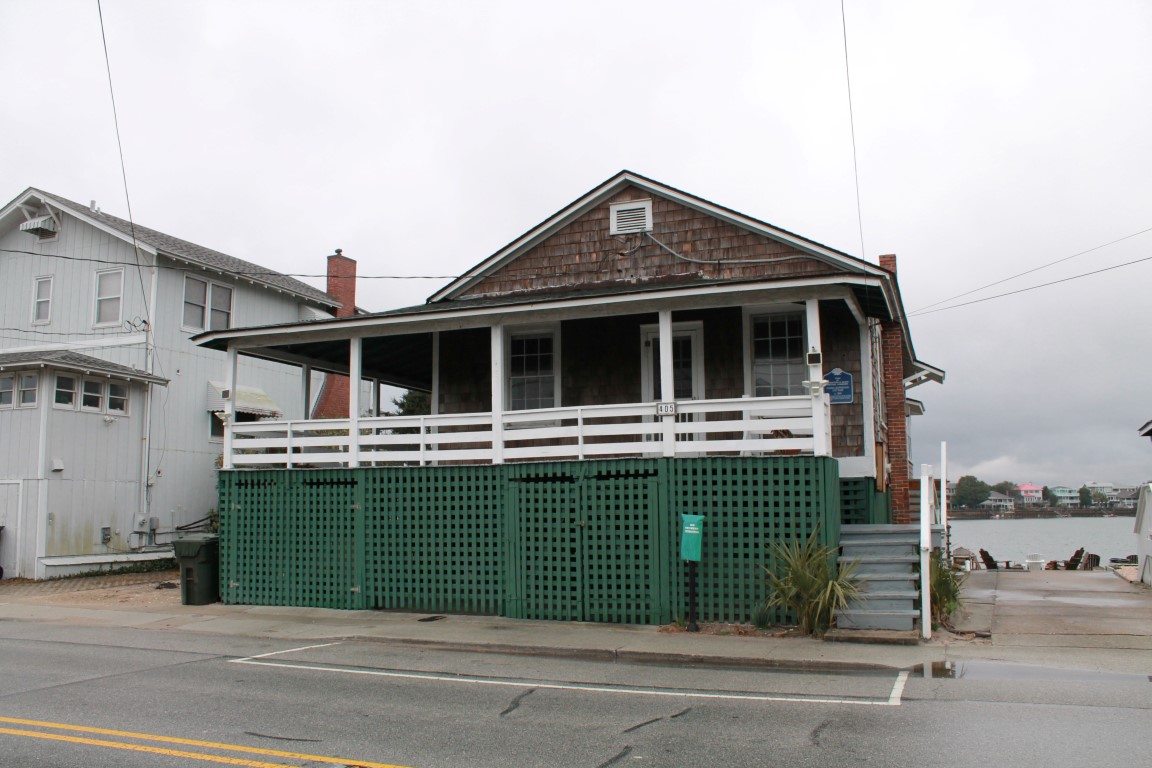A nearly 100-year old Wrightsville Beach cottage that’s registered as a historic landmark was sold last week, prompting local preservationist to start an effort to move the classic home that narrowly survived the town’s great fire of 1934.
The new owners of the Ewing-Bordeaux Cottage are willing to donate it to the Wrightsville Beach Museum of History, telling officials they would rather donate the home than demolish the structure that was originally built in 1925. Because the house is formally registered with North Carolina as a landmark, there is a one-year moratorium before the home can be demolished. It is one of 21 properties in the town designated a historical landmark.
The Wrightsville Beach Museum of History will launch a fundraising campaign to pay to move the house to the town’s historic square, where it will be restored and then serve as a second building for the museum, according to the museum’s executive director Madeline Flagler.
The house, located at 405 N. Lumina Ave., was purchased by Chris and Deb Strickland, who will use the lot to build a new house, said Ronnie Hunt, real estate agent with Hardee, Hunt & Williams. The one-story frame cottage sports a hipped roof, is covered with cypress shingles, and features a wrap-around porch on the east and south sides, bringing together the indoor and outdoor living spaces.
“They’re thrilled and happy to that they’re able to do this,” Hunt said of the new owners. “They are excited the house will have another life.”
But the commitment to donate the building also sets a deadline on local preservationists like Flagler, who said the primary goal is to find a way to save the house, even if it can’t be retained in Wrightsville Beach. Flagler said moving the house to another town was a better result than demolition, which could be a possibility if a buyer emerges before enough money can be raised for the moving project.
But Tina Williamson, a Wrightsville Beach interior designer serving as the 2017 president of the museum board of directors, said that the effort should be made to preserve the cottage in Wrightsville Beach.
“There’s a lot of people that love Wrightsville Beach and who believe that we need to keep this history going,” Williamson said.
To move the house, the museum could need to raise nearly $200,000, though the exact amount needed for the project is still unclear, Flagler said. Moving the house would take only as much as a quarter of that cost, from between $20,000-$50,000, with the significant remaining expenses going towards restoring the house once it’s in its location.
Before fundraising for the project starts, it must get approval from a trio of town boards, starting with a March 7 review by the planning board, before it goes to the town’s historic landmark commission. The application to the town’s “historic relocation program” would then go before the town’s board of aldermen for a final approval.
Before then, members of the museum board, along with staff and volunteers, will work on a plan to present the town, Flagler said.
“Understandably, the board of aldermen will want a pretty full picture of what we’re trying to do,” Flagler said. “It’s extremely exciting, but it’s happening very quickly.”
The Williams-Bordeaux Cottage would be an addition to, not a replacement for, the museum, which is currently housed in another relocated building, the Meyers Cottage.
Adding the new building potentially give the museum an opportunity to expand to new exhibits covering topics not currently covered, Flagler added. One possibility is an exhibit dedicated to activities associated with the annual “watermen” awards that the museum hosts.
Moving the house would create quite a few challenges, Flagler said, noting that the structure wasn’t designed to take the traffic the museum could generate, nor is there a plan on how to keep a second, separate building staffed.
“We still have some logistics questions, but the potential outweighs the negatives,” Flagler said.




